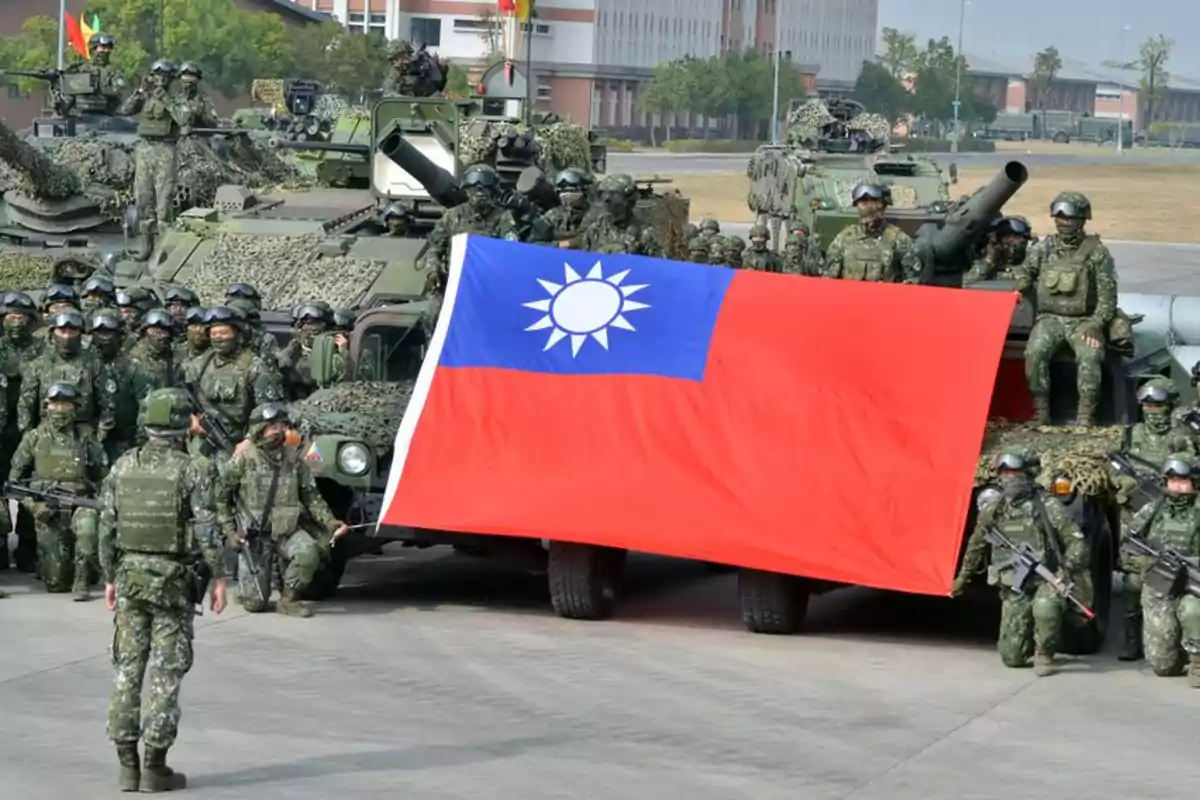
Taiwan will increase its military budget to confront the Chinese threat.
Taipei's government plans to increase its defense spending in response to a growing trend of aggressive maneuvers by Xi Jinping's regime
Taiwan plans to increase its defense spending by 22.9% for 2026, surpassing the 3% threshold of its Gross Domestic Product (GDP) for the first time since 2009. The budget will reach 949.5 billion New Taiwan dollars (about 31.27 billion US dollars), which is equivalent to 3.32% of GDP, according to official figures.
This measure aims to strengthen its military capability in the face of growing military and political pressure from China, as well as to respond to demands from the United States for the island to reinforce its defense.
China, which considers Taiwan part of its territory, has intensified its military exercises and diplomatic pressure on the island over the past five years in an attempt to reaffirm its sovereignty. However, Taiwan, which is governed democratically, categorically rejects those claims and has adopted a firm stance to defend its autonomy.
Taiwanese President Lai Ching-te announced this month his intention to raise defense spending to more than 3% of GDP, aligning with Washington's expectations, which has also urged its European allies to increase their military investments in the face of global threats.

Meanwhile, Prime Minister Cho Jung-tai emphasized that this budget increase reflects Taiwan's commitment to national security, regional stability in the Indo-Pacific, and its shared responsibility with the international community.
Cho also highlighted that Taiwan is adopting the "NATO model" by including in its total defense budget spending allocated to the coast guard and military veterans. For the first time, the country will officially include the coast guard in its defense accounts, a measure that reflects its growing role in national security.
Taiwanese officials explained that the coast guard has been on the front line of confrontations with its Chinese counterpart, especially in areas near disputed islands.
In the event of an armed conflict, its functions would be directly integrated with naval defense operations. In addition, they highlighted the need to address new threats, such as the "gray zone" tactics employed by China, which include constant patrols near Taiwanese waters as a form of unconventional pressure.

Within the new budget, 117.6 billion New Taiwan dollars will be allocated in special proposals to acquire new fighter jets and strengthen naval defenses. This is part of the Taiwanese government's military modernization plan, which also includes the development of locally manufactured submarines.
China, meanwhile, continues to rapidly modernize its armed forces, including new aircraft carriers, stealth fighters, and next-generation missiles.
In March, Beijing announced a 7.2% increase in its defense spending for 2025, raising it to 1.78 trillion yuan (about 248.17 billion US dollars), a figure that far exceeds its economic growth target for the year, set at 5%.
Taiwan thus faces a scenario of increasing military tension in the region, seeking to strengthen its defense not only as a deterrent against China, but also to demonstrate to its allies, mainly the United States, that it is committed to its own security. Taipei's decision represents a firm step toward greater defense autonomy and a clear message that it will not yield to pressure from Beijing.

More posts: